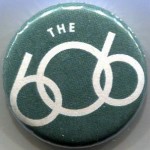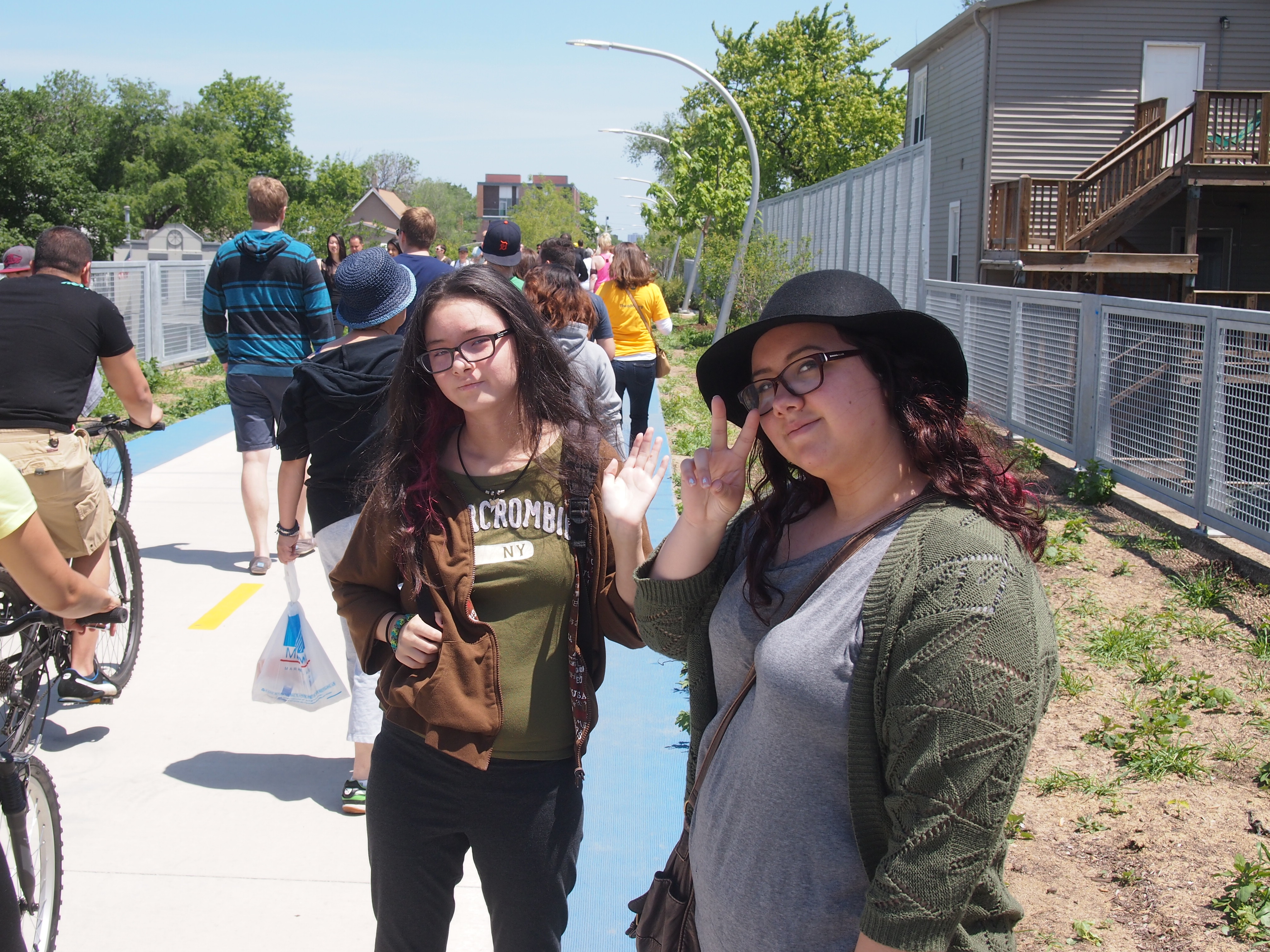What a weekend in the wider world: the first Triple Crown winner since the Carter Administration, a daring prison break by dangerous inmates, and a solar sail unfurls in space. I didn’t know Bill Nye was CEO of the Planetary Society, but I suppose it helps fundraising to have a Science Guy at the top spot.
Here in metro Chicago on June 6, 2015, the 606 opened to the public, and we were there. Usually I don’t bother with opening nights or premieres or the like, but somehow I wanted to be on the 606 on the very first day. Call me a sucker for quality-of-life urban infrastructure.
 The 606, also known at the Bloomingdale Trail, is a new linear park fashioned from 2.7 miles of an abandoned elevated rail line on the near Northwest Side of Chicago, linking the easterly neighborhoods of Wicker Park and Bucktown with Humboldt Park and Logan Square to the west. The line handled freight for decades, serving the factories that used to be in these parts of town. Even before most of the factories closed, trucks had usurped the role the freight line used to play.
The 606, also known at the Bloomingdale Trail, is a new linear park fashioned from 2.7 miles of an abandoned elevated rail line on the near Northwest Side of Chicago, linking the easterly neighborhoods of Wicker Park and Bucktown with Humboldt Park and Logan Square to the west. The line handled freight for decades, serving the factories that used to be in these parts of town. Even before most of the factories closed, trucks had usurped the role the freight line used to play.
As Edward Keegan writes in Crain’s Chicago Business, “Completed in 1913, the 606’s underlying structure elevated the Chicago, Milwaukee and St. Paul Railway freight trains above Bloomingdale Avenue to prevent the frightfully frequent pedestrian deaths of the time. Railroad use dwindled through the 1980s and 1990s, and these four neighborhoods were left with a daunting bit of early-20th-century infrastructure that defied easy demolition. Massive, parallel concrete walls, 7 to 10 feet thick at their base — held earth between them to lift double railroad tracks a full story above surrounding streets. It was a great engineering feat, but the east-west wall separated neighborhoods.”
The thing to do in the early 21st century, then, was to give it the High Line treatment, that is, redevelop it into a linear park, though the end result isn’t exactly the same. “The overall design is remarkably matter of fact,” Keegan notes, and I agree. “A concrete path — 10 feet wide with 2-foot-wide, soft-edged borders on each side for runners — winds the 2.7-mile length of the park. While the bounding walls of the old superstructure are mostly parallel, the designers deftly move the path from side to side and up and down to the extent possible to provide as interesting a path as possible for its users.
“Brooklyn-based landscape architect Michael van Valkenburgh chose more than 200 species of plantings that appear within the park. Due to its east-west configuration and length, Chicago’s lake effect will be evident each spring as certain species, including serviceberries [what?], will take as much as five days to bloom progressively from west to east. But don’t head out to the 606… and expect too much from the landscaping. Plantings are generally quite young, spare and even scraggly in places.”
Some of the benches weren’t finished either. In short, there’s still work to be done on the trail, but even so the warm, sunny day on Saturday make for a good walk, despite the intense crowd of other walkers and bicyclists. The crowd seemed to be in a good mood, which always helps.
In the early afternoon, we drove into town and parked near Humboldt Blvd., which passes under the 606. At the time there was a street festival on Humboldt Blvd. on either side of the 606 featuring music, food, booths of various sorts, and free 606 souvenir buttons.
 Soon we made our way to the long ramp just east of the boulevard and walked up it to the trail. Then we headed east, occasionally posing for pictures along the way.
Soon we made our way to the long ramp just east of the boulevard and walked up it to the trail. Then we headed east, occasionally posing for pictures along the way.